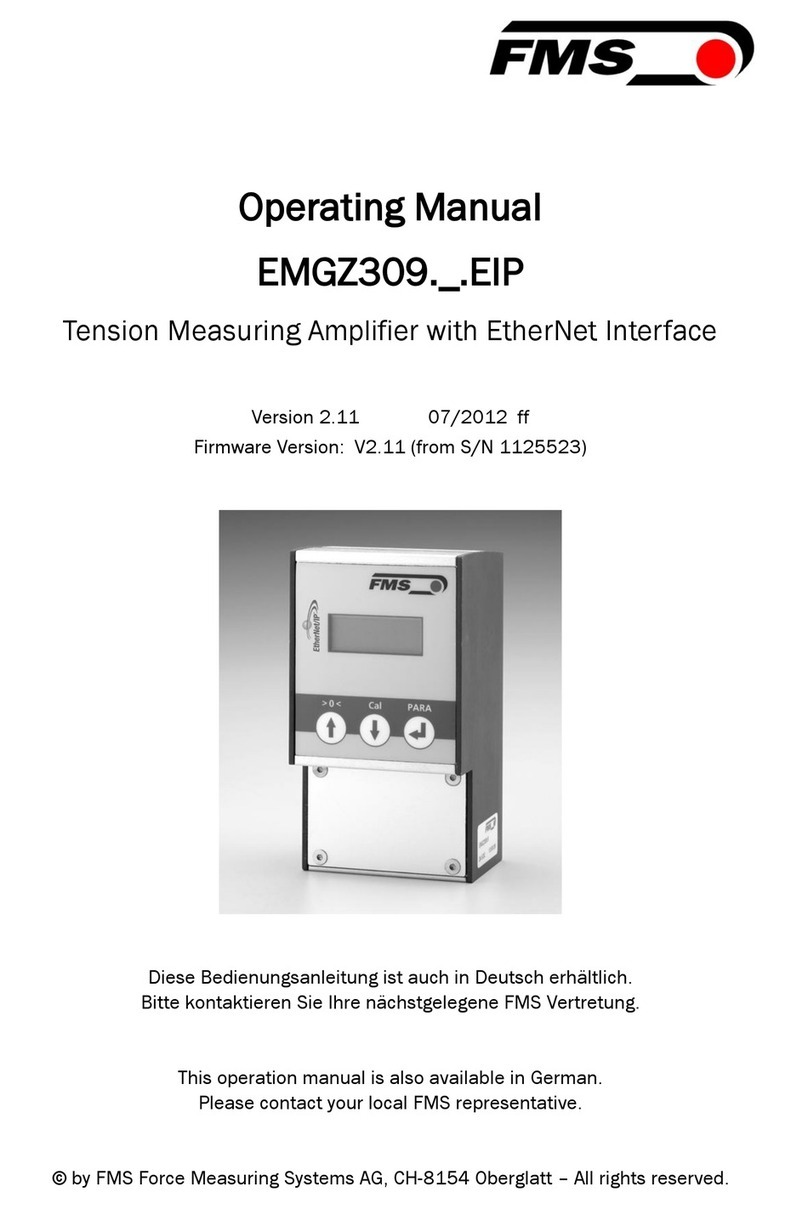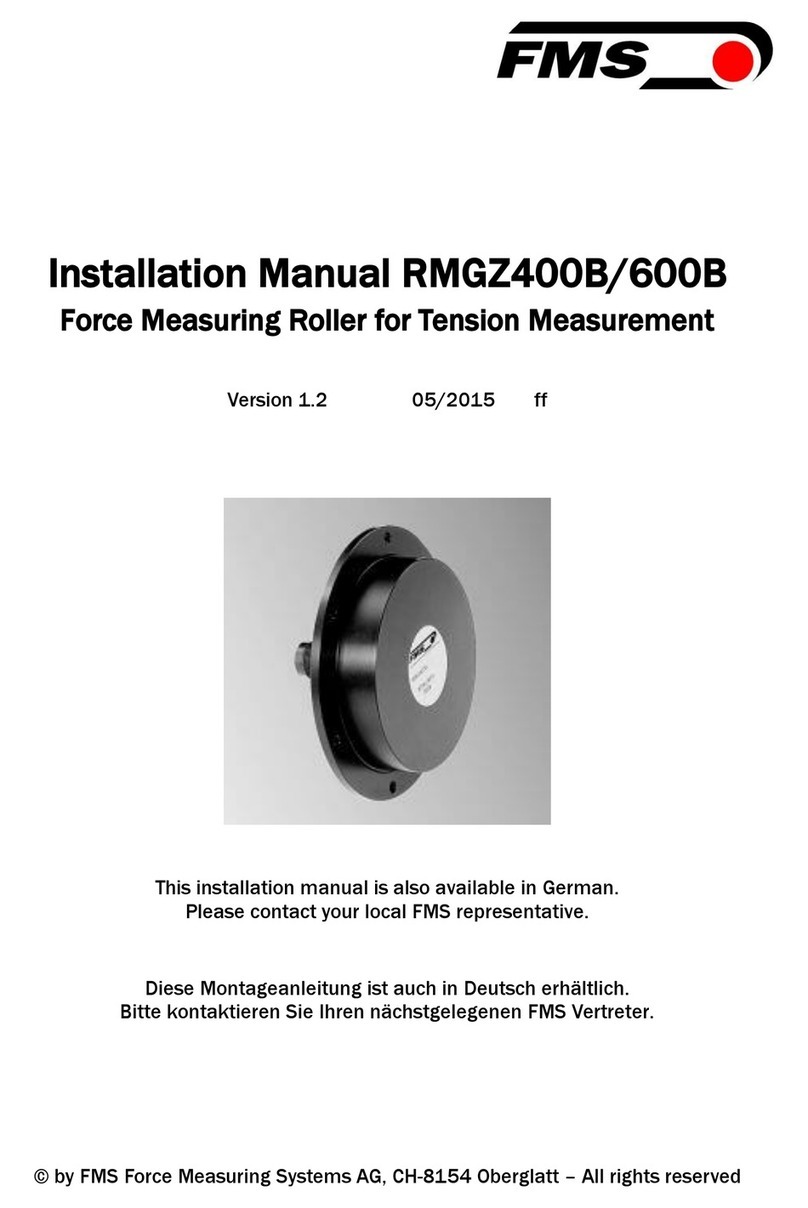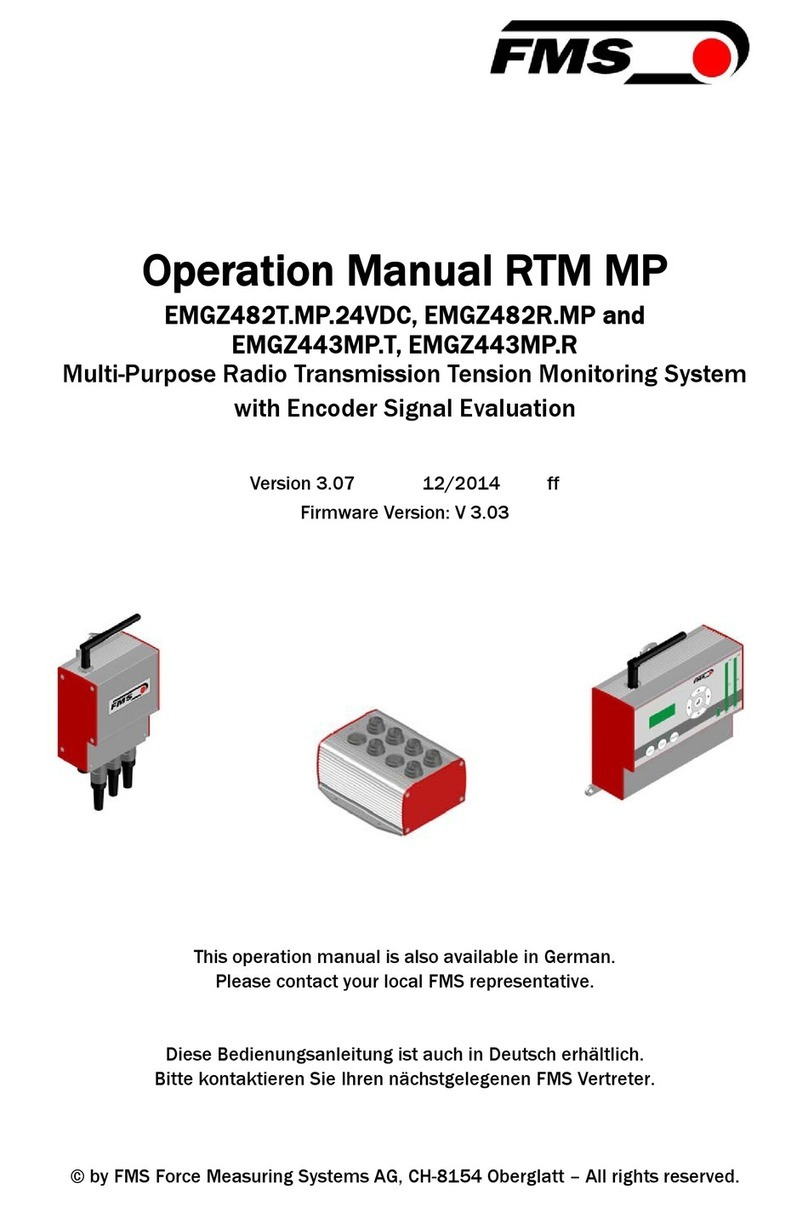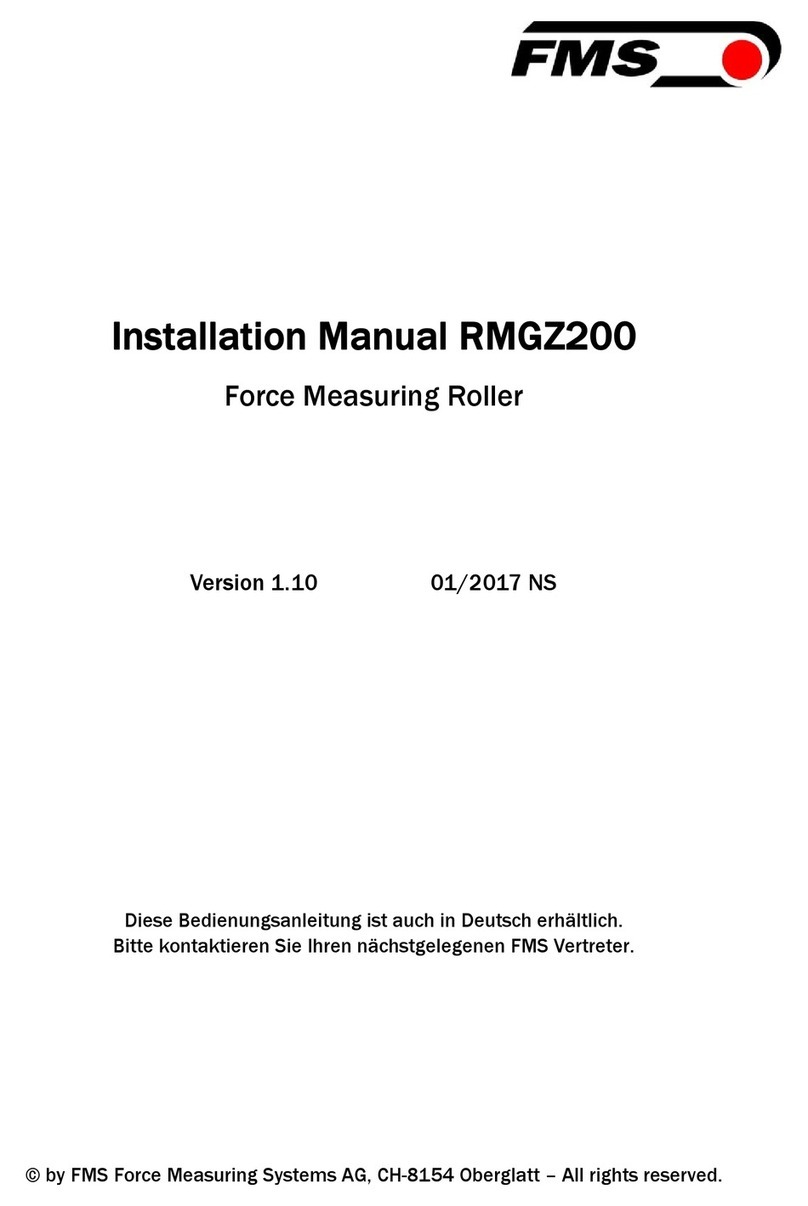
Operating Manual EMGZ480
2
Table of contents
1Safety Instructions ....................................................................................4
1.1 Warnings 4
1.2 List of Safety Instructions 4
2Definitions..................................................................................................4
3System Components..................................................................................5
4System Description....................................................................................6
4.1 Functional Description 6
4.2 Force Sensor 7
4.3 Electronic Unit EMGZ480, EMGZ480.M16 7
5Quick Installation Guide..........................................................................8
6Dimensions.................................................................................................9
6.1 Dimensions EMGZ480 9
6.2 Dimensions EMGZ480.M16 10
7Installation and Wiring ..........................................................................11
7.1 Mounting the Force Sensors 11
7.2 Mounting the Measuring Amplifier 12
7.3 Connector Configuration and Setting Elements 12
7.4 Wiring Diagrams 14
8Calibrating the Measuring Amplifier ...................................................16
8.1 Simulating Method, Calibration with the PLC or PC 16
8.2 Mathematical Method 17
8.3 Scaling of Analogue Output 18
8.4 Configuring the Lowpass Filter 18
9Parameter Setting....................................................................................19
9.1 List of System Parameters 19
9.2 List of Parameter EMGZ 480 / 480.M16 19
9.3 Description of the System Parameters 20
9.4 Description of Parameters EMGZ480 / 480.M16 21
10 Specification of the CAN-Bus Interface (Devise profile)...................24
10.1 General Remarks 24
10.2 Summary of Objects (application specific) 24
10.3 Device Identification 25
11 CAN Bus Object Catalogue....................................................................26
11.1 Object 2001: Parameter Offset 26
11.2 Object 2002: Parameter Gain 28
11.3 Object 2003: Parameter Force of Sensor 30
11.4 Object 2004: Parameter Unit of Sensor 32
11.5 Object 2005: Parameter Lowpass Filter 34
11.6 Object 2006: Parameter Limit value 1 min or max 36
11.7 Object 2007: Parameter Limit value 1 38
11.8 Object 2008: Parameter Limit value 2 min or max 40
11.9 Object 2009: Parameter Limit value 2 42































